Our Destinations
KENYAN DESTINATIONS
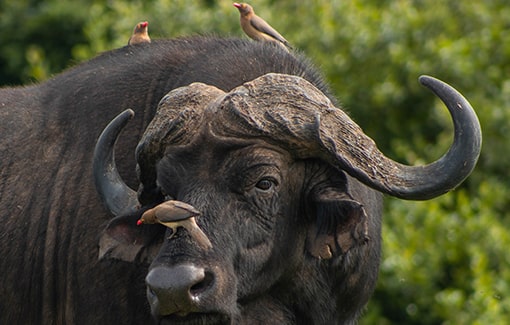
ABERDARE NATIONAL PARK
The Aberdares is an isolated volcanic range that forms the eastern wall of the rift valley, running roughly 100 km north-south between Nairobi and Thomson’s Falls. Established in May 1950, the Park covers an area of 766km² and forms part of the Aberdare Mountain Range. The park contains a wide range of landscapes – from the mountain peaks that rise to 14,000 feet (4,300 m) above sea level, to the deep, v-shaped valleys intersected by streams, rivers, and waterfalls. Moorland, bamboo forests and rainforests are found at lower altitudes. Animals found here include the leopard, African elephant, African hunting dogs, giant forest hog, mountain reedbuck, suni antelope, to name a few. Rarer sightings include the golden cat and bongo. The park also has over 250 species of birds.
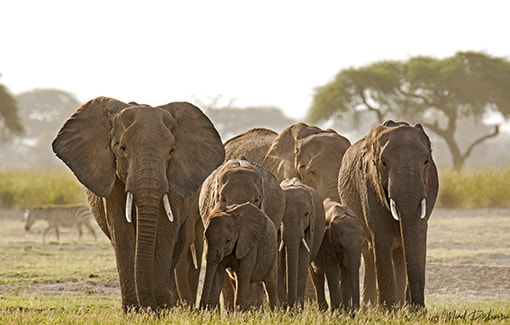
AMBOSELI NATIONAL PARK
Framed against the glorious backdrop of Africa’s highest mountain, the magnificently beautiful Mount Kilimanjaro standing at 5,896 meters, surrounded by miles of rolling grasslands, shaded by the lush, feathered-green of an acacia grove and hugging the banks of a gently flowing river, this park is the safari destination of a lifetime. Against this magnificent backdrop roam vast herds of elephant accompanied by a kaleidoscope of other fabulous beasts – lion, buffalo, cheetah, giraffe, baboon, gazelle hippo and wildebeest to name but a few. Amboseli is renowned for its elephant populations and large herds, including some impressively tusked bulls are drawn to a series of large, lush swamplands. There are also over 400 species of birds, all manner of reptilian, flora and fauna and some of the most soul-searing views in Africa.
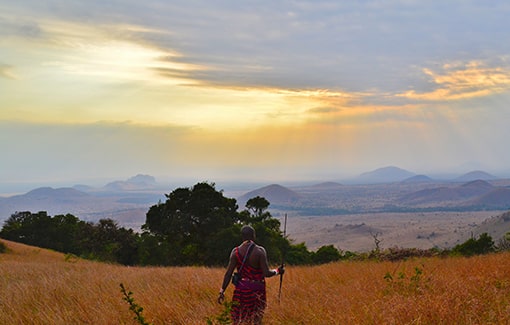
CHYULU HILLS NATIONAL PARK
The Chyulu Hills, and the plains that lie at their feet to the south, are one of Kenya’s most photogenic regions. A magical land of black frozen lava studded with blazing red-hot poker trees, with shoals of extinct volcanoes wreathed in dense forest abs hung with Spanish moss, the Chyulu Hills coil a sleeping dragon on the lion-gold plains of treasure. The pink haloed peak of Mount Kilimanjaro rises to the west and all around stretches the mirage miles of Masai land, dusty, dry and stalked by scarlet cloaked herders and dust plumed cattle. The park boundary runs down the centre of the hills along the lines of the peaks. Some of the game at the park includes Buffalo, Zebra, Giraffe, Lion, Leopard, Bushbuck, Eland, Elephant, Giant forest hog, Bush Pig, and Reedbuck. It is also a great park for bird watching and horseback riding.
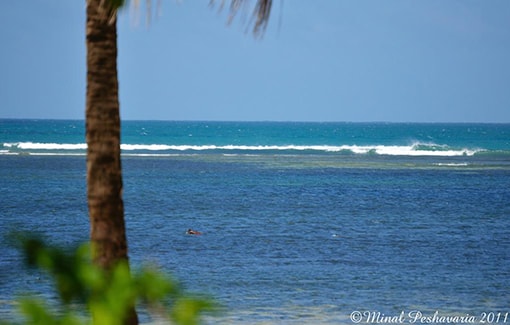
DIANI BEACH
Diani Beach is one of the most exclusive locations for Kenya beach holidays. Situated on the South Coast of Mombasa, the 25 kilometre strip is made up of Tiwi, Diani, Galu, Kinondo & Chale Island. This coastline south of Mombasa is a tropical paradise of palm fringed white sand beaches, where the turquoise waters of the Indian Ocean meet beautiful coral reefs. The protective reefs have created ideal beaches with calm, inviting waters. They are alive with coral, a myriad of fish, sea turtles and dolphins. Both outer and inner reef walls offer world class diving with spectacular coral gardens and drop offs. The beaches are bordered by lush green coastal rainforests with prolific birdlife and variety of wildlife including baboons, rare colobus monkeys and even leopard.
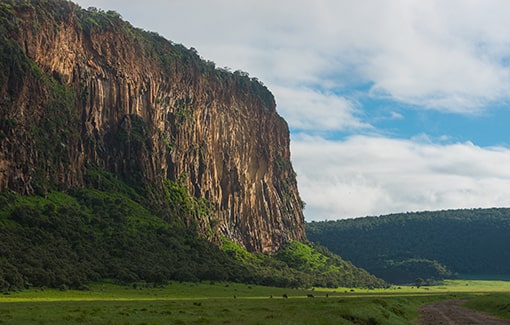
HELL’S GATE NATIONAL PARK
Hell’s Gate National Park is named after a narrow break in the cliffs, once a tributary of a prehistoric lake that fed early humans in the Rift Valley. It received the name “Hell’s Gate” by explorers Fisher and Thomson in 1883. It was established in 1984. A small national park, it is known for its wide variety of wildlife and for its scenery. This includes the Fischer’s Tower and Central Tower columns and Hell’s Gate Gorge. The comprehensive Olkaria Geothermal Station, the first of its kind in Africa, was established in 1981 and generates geothermal power underneath Hell’s Gate from the area’s hot springs and geysers. This dusty but dramatic rift valley park is one of only two lowland parks where you can walk or cycle without a ranger or a guide. There is a wide variety of wildlife in the national park, though many are few in number.
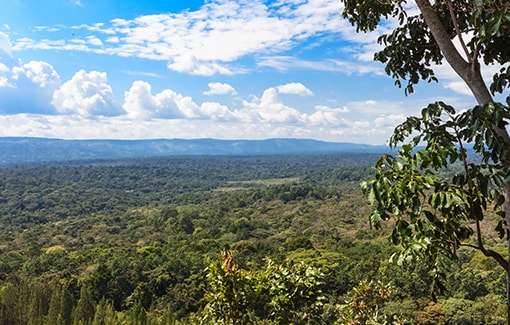
KAKAMEGA FOREST NATIONAL RESERVE
Located in Western Kenya, 418 km from Nairobi, it is the only tropical rainforest in Kenya, left over from past millennia when dense rain forest stretched from West Africa, across Central Africa and into the highland areas on the west and eastern walls of the Great Rift Valley. The forest has been a protected area of Kenya since its role in the ecosystem was first recognised in 1933. The size and grandeur of these immense trees, some over a hundred years old, is impressive. The forest includes some of Africa’s greatest hard and soft woods. Splendid orchids sit amongst the branches of the larger trees. Walking beneath the lush forest canopy the deep shade is pierced by flashes of colour, exotic birdcalls, the scents of wood, flower and moss. 350 species of birds have been recorded including rare snake-eating birds.
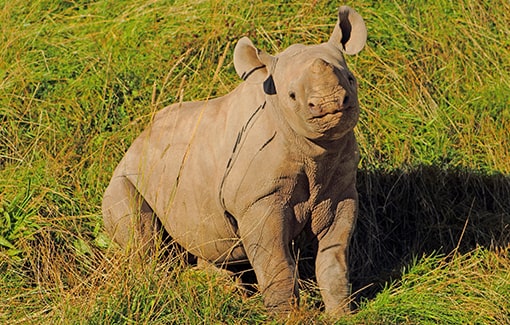
LAIKIPIA AND LEWA DOWNS CONSERVANCY
Laikipia District is a vast plateau to the north west of snow-capped Mount Kenya, straddling the equator at the heart of Kenya’s Rift Valley Province. It spans an area of over 9,500km². The Laikipia plains stretch from the Great Rift Valley to magnificent escarpments which descend into the Northern Frontier District. Wild and sparsely populated, much of Laikipia is covered by large privately owned ranches. Sprawling over the plains, Lewa Wildlife Conservancy is a prolific wildlife conservancy set on 55,000 acres that is popular with celebrities, conservationists, writers and photographers. The Conservancy is home to the largest concentration of Grevy’s zebra in the world, vast herds of elephants, elands, zebras, giraffes, and buffaloes, and its range of habitats attracts diverse birdlife and rare species such as Beisa oryx.

LAKE BARINGO
Lake Baringo is at the threshold of Northern Kenya, and its freshwaters are an oasis in the arid plains. It is, after Lake Turkana, the most northern of the Kenyan Rift Valley lakes, with a surface area of about 130km². The lake is part of the East African Rift Valley. Water flows into the lake from the Mau Hills and Tugen Hills. It is a critical habitat and refuge for more than 500 species of birds and fauna such as Pelicans, Cormorants and Fish Eagles, some of the migratory water bird species being significant regionally and globally. The lake also provides an invaluable habitat for seven fresh water fish species. The Lake is also well populated with Crocodile and Hippos. Lake Baringo itself is truly beautiful, surrounded by volcanic ranges that stretch as far as the eye can see.

LAKE BOGORIA NATIONAL RESERVE
Lake Bogoria lies just south of Lake Baringo but contrasts sharply with Baringo’s green and lush surroundings. This soda lake, with its shores of hot springs, boiling geysers and steam jets, stark evidence of the volcanic origins of the Rift Valley, lies hidden behind ridge after ridge of barren stony scrubland. Although primarily scenic, Bogoria is by no means devoid of wildlife. Birds are plentiful and, at times, when the waters of Lake Nakuru are low, thousands of flamingo make this their home. Lake Bogoria National Reserve covers 114 km² and is famous for spectacular hotsprings and geysers. The reserve is unique because of its herd of the rare Greater Kudu. There are also buffaloes, zebras, impalas, dik diks and many small mammals. Bogoria is also an area of significant ornithological interest with 135 species of birds recorded.
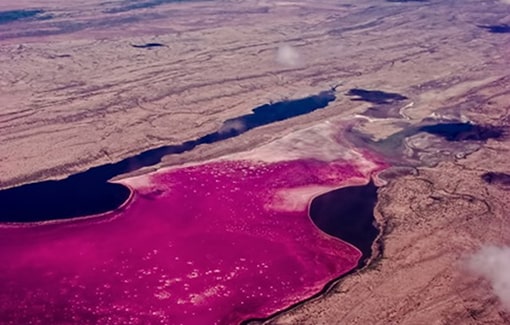
LAKE MAGADI
Deep in the heart of Southern Kenya’s Masai land is the unearthly Lake Magadi. This 104 km² soda lake is completely surrounded by vast natural salt flats. It is known for being one of the hottest and driest places of Kenya and for its pinkish mirror-like soda lake. These sweltering hot plains prevent any animals reaching the alkaline lake at its centre. For this reason, thousands of flamingos descend on the lake each year to nest on elevated mud mounds at the lake’s edge safe from any potential predators. Freshwater springs at the Lake’s shore attract a host of other birds. Magadi is often the final destination for treks from the Nguruman escarpment or the Loita hills. Proximity to Nairobi means that trekkers can leave the heat of Magadi behind and ascend 1000 metres to the highland cool of the capital.
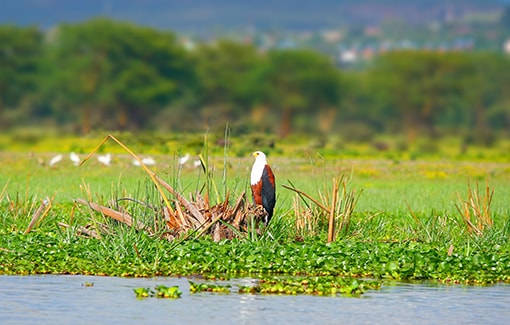
LAKE NAIVASHA
Lake Naivasha is a beautiful freshwater lake, fringed by thick papyrus. The lake is almost 13kms across, but its waters are shallow with an average depth of five meters. Afternoon wind and storms can cause the Lake to become suddenly rough. For this reason, the local Masai christened the Lake Nai’posha meaning ”rough water”, which the British later miss-spelt as Naivasha. Much of the lake is surrounded by forests of the yellow barked Acacia Xanthophlea, known as the yellow fever tree. These forests are abound with bird life. The waters of the lake also draw a great range of game to these shores. Giraffes wander among the acacia, Buffalo wallow in the swamps and Colobus monkeys call from the treetops while the Lakes large hippo populations sleep the day out in the shallows.
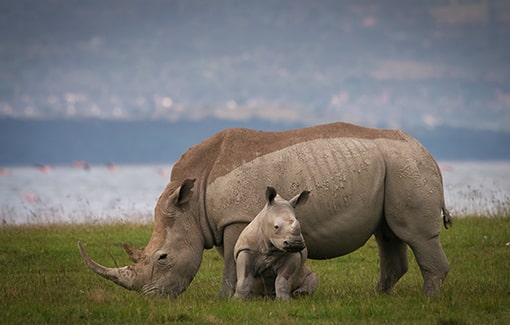
LAKE NAKURU NATIONAL PARK
Nakuru is one of the alkaline Rift Valley lakes and a fantastic bird sanctuary, its shores populated at times by more than one million flamingos. It covers the lake and a land strip around the northern, eastern and western shores, whereas southward the grounds extend farther to Makalia Falls. The shores are surrounded by swamps that during the driest seasons disappear to give rise to huge white salt crusts. The riverine forest opens up southward in a bush and acacia tree savannah. At the west shore, Baboon Cliffs are the preferred habitat for some species, while in the east, a part of Lion Hill is covered by magnificent Euphorbia or candle tree forest, giving the landscape a prehistoric look. The park hosts hides near the lake for bird observation. It is also home to a large number of mammals, including lions and leopards.
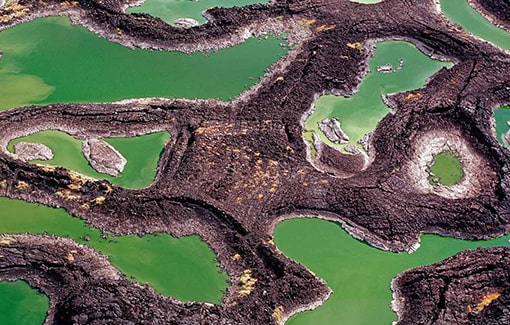
LAKE TURKANA
At Kenya’s far Northern frontier lies Lake Turkana, the largest inland desert lake in the world. This single body of water is over 250 kilometres long. It is known as the Jade Sea, because of the remarkable, almost incandescent, color of its waters. The site lies at the heart of the Sibiloi National Park, a place of stark beauty and prehistoric petrified forests. The semi desert ecosystem was established to protect wildlife and the unique prehistoric and archaeological sites. The park is waterless except for the alkaline waters of the lake; it harbors variety of wildlife including the gerenuk, Beisa Oryx, the rare lesser kudu, Tiang, common zebra, hippos, crocodile and numerous bird species such as flamingos, pelicans. Other attractions are the preserved wildlife fossils which include the Giant Tortoise and the 18-20 ft long Crocodile.
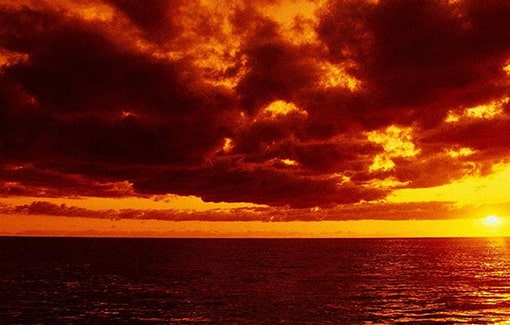
LAKE VICTORIA
Lake Victoria is a massive lake, twice the size of Wales, and forms a natural boundary between Kenya, Tanzania and Uganda. The lake is the heart of the African continent, the source of its mightiest river, the Nile. The Nile flows northwards, carrying the waters of Nyanza to Egypt and beyond into the Mediterranean. This mighty body of water is rich in fish life, with shimmering shoals of colourful cichlids and large Nile Perch. Kisumu is a quiet port town on the Lakeshore, with wide streets and fine colonial architecture. To the south fishing villages line the lake towards the broad waters of Homa Bay. This area is home to Ruma National Park, a small but attractive park with many unique species. In trees along the shore, Fish Eagles call to each other with long haunting cries.
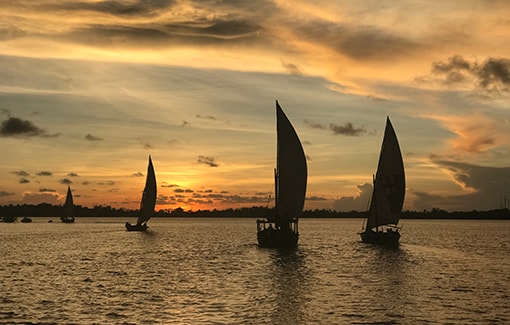
LAMU ISLAND
Lamu is a place like no other, a peaceful tropical island where life is lived at its own relaxed rhythm. The island itself is a beautiful place of rolling dunes and endless beaches, where tiny villages nestle among coconut and mango plantations and lateen sailed dhows ply the waters. But the real attraction is its Old town. There are no vehicles on this island, and the donkey and the dhow remain the dominant form of transport. Dhow safaris can take you beyond Lamu into the surrounding archipelago, where isolated villages, ancient ruins and a few luxurious and exclusive resorts lie hidden among the islands of Manda, Siyu, Pate and Kiwayu. Most visitors to Lamu come to experience the unique culture and history of the island. But there are also opportunities for wildlife enthusiasts to explore.
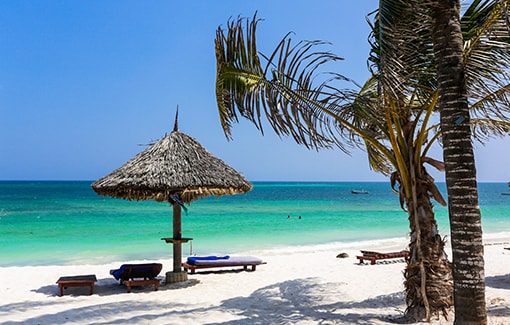
MALINDI AND WATAMU
The small town of Malindi is at the centre of a strip of idyllic tropical beaches offering visitors a range of world class resorts and quiet relaxing hideaways. Further south, the sleepy village of Watamu is fronted by wide white beaches. This tranquil haven is home to several well established resorts. Watamu National Park is part of a complex of marine and tidal habitats along the Kenya’s north coast. It is enclosed by the Malindi Marine National Reserve which also encloses Malindi Marine National Park. Marine life attractions include fish, turtles, dugongs and crabs. The Mida Creek forest has a high diversity of mangrove species. These provide refuge to a variety of both resident and migrant bird species. The thick jungles of the Arabuko Sokoke Forest reserve hide a world of wonders.
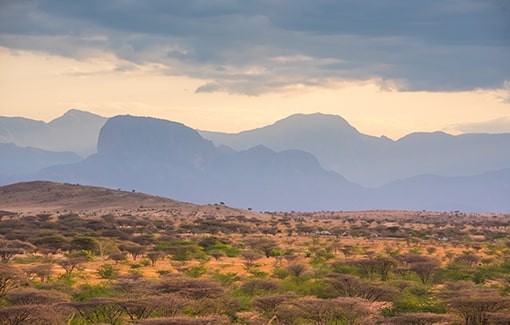
MARSABIT NATIONAL PARK
The Marsabit National Park comprises of densely forested mountain and three crater lakes that are the only permanent surface of water in the region and that provide habitat for a variety of birdlife. A safari into this area brings the promise of plenty of wildlife. Some of the best game viewing in this area is in Marsabit National Park. Plains game, including Northern endemics such as Grevy’s Zebra, Reticulated Giraffe and Oryx are often seen as well as large herds of Elephant. Major wildlife attractions include the African elephant, the endangered Grevy’s zebra, lion, leopard, buffalo, bushbuck, large herds of greater and lesser kudus, common zebra, Grant’s gazelle and many other small antelopes. The riverine forests are good birding country. Leopards have been known to frequent these forests, and have been sighted here at sunset.
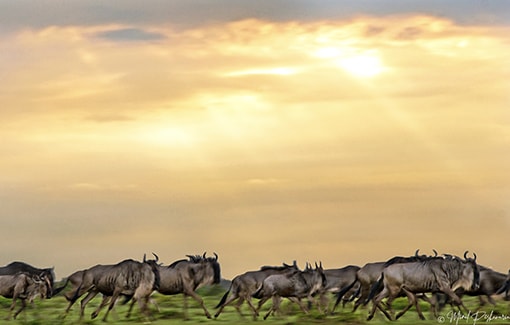
MASAI MARA GAME RESERVE
Located in south-western Kenya, bordering Serengeti National Park, the Masai Mara is Kenya’s finest wildlife sanctuary. The wildlife is abundant and the gentle rolling grasslands ensure that animals are never out of sight. Birds too are prolific, including migrant birds and birds of prey. Between July and October, when the great wildebeest migration is in the Mara the sensation is unparalleled. It is estimated that more than half a million wildebeest enter the Mara and are joined by another 100,000 from the Loita Hills east of the Mara. Apart from the better-known species, rare ones can also be found such as the roan antelope, Bat-eared foxes and topi. The combination of a gentle climate, scenic splendour and untold numbers of wildlife makes the Masai Mara National Reserve Kenya’s most popular inland destination.
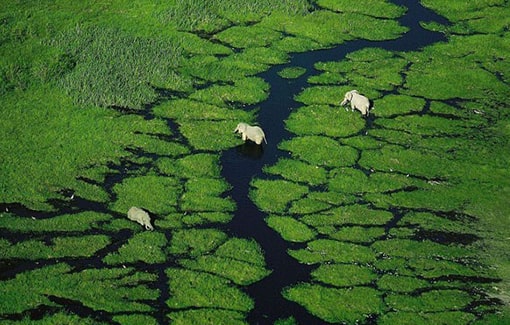
MERU NATIONAL PARK
Meru National Park is wild and beautiful. Straddling the equator and bisected by 13 rivers and numerous mountain-fed streams, it has diverse scenery from woodlands at 3,000 feet on the slopes of Nyambeni Mountain Range, north-east of Mount Kenya, to wide open plains with wandering riverbanks dotted with doum palms. Game to view includes: lion, elephant, cheetah, leopard and some of the rarer antelopes; Lesser Kudu, duiker and Dik Dik, one of Africa’s smallest antelopes. The rivers abound with hippo and crocodile, fishing for barbus and catfish is permitted at camp sites and along the Tana River. Over 300 species of birds have been recorded including: the Peter’s Finfoot which inhabits the Murera and Ura Rivers, the Pel’s Fishing Owl, kingfishers, rollers, bee-eaters, starlings and numerous weavers.
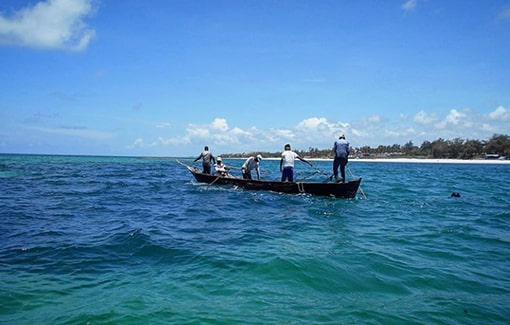
MOMBASA NORTH COAST AND OLD TOWN
Mombasa is an island connected to the mainland by bridges and ferries. The town overlooks a wide harbor, where commercial shipping mingles with traditional sailing dhows. The coastline North of Mombasa is a world of enthralling history and natural beauty. It is lined with pristine palm fringed beaches, and the calm inviting waters of the Indian Ocean which offer an ideal escape from the outside world. The offshore reefs are alive with coral, myriad fish, sea turtles and dolphins. Both outer and inner reef walls offer world class diving with spectacular coral gardens and drop offs. The true heart of Mombasa is found in the exotic old town, among the narrow winding streets and Arab architecture. At the water’s edge is Fort Jesus, an imposing fort that stands watch over the harbor as a testament to the tumultuous past.
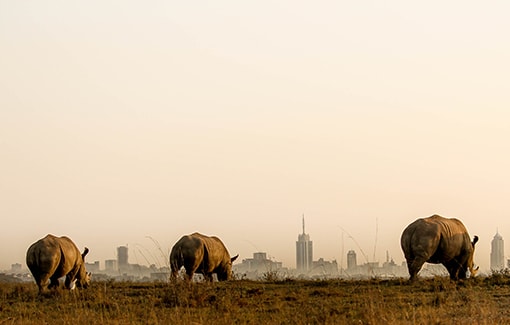
NAIROBI NATIONAL PARK
Nairobi is the only city in the world to boast a 12,000-hectare park (117 km2), teaming with wildlife, right on its doorstep. It is the principal attraction in Nairobi. It has diverse environments with characteristic fauna and flora. Open grass plains with scattered acacia bush are predominant. The western side has a highland dry forest and a permanent river with a riverine forest in the south. There are stretches of broken bush country and deep, rocky valleys and gorges with scrub and long grass. To the south is the Athi-Kapiti Plains and Kitengela Migration and dispersal area. These are vital areas for herbivores. Major wildlife attractions are the black and white rhinos, lion, leopard, cheetah, hyena, buffaloes, giraffe, zebra, wildebeest, elands, and hartebeests. The park also has a rich and diverse birdlife with 400 species recorded.
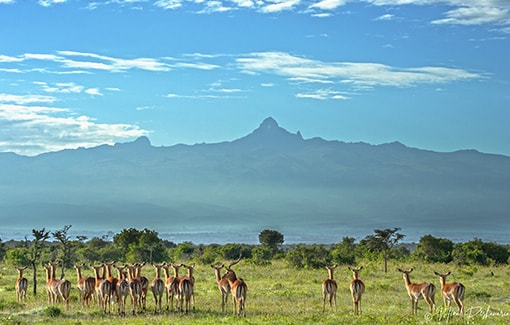
OL PEJETA CONSERVANCY
Ol Pejeta, or Sweetwaters as it was formerly known, is a not-for-profit organization in the heart of the Laikipia area of Kenya. The landscape is mainly open grassy plains, thorny thickets and acacia woodland. The Uaso Nyiro River runs through the reserve and there are a number of waterholes and dams. Ol Pejeta is East Africa’s Largest Black Rhino Sanctuary, the only place in Kenya to see chimpanzees and holds some of the highest predator densities in Kenya. The reserve has a network of tracks for game drives allowing visitors to explore the reserve and to see a wide variety of wildlife species. The reserve boasts abundant wildlife – over 400 species of birds, lion, elephant, rhino and cheetah to name just a few. Night game drives offer opportunities of seeing some of the nocturnal animals like aardvark or even leopard.
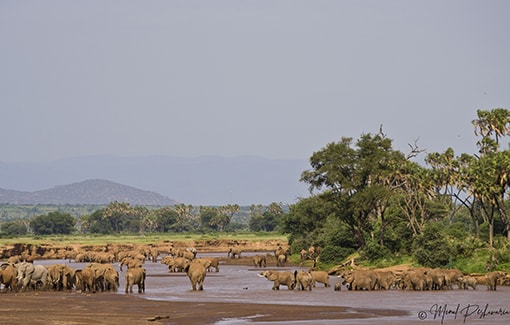
SAMBURU NATIONAL RESERVE
Samburu National Reserve is 320 kms north of Nairobi. It is flanked on the south by the smaller but equally attractive Buffalo Springs National Reserve. The two sanctuaries comprise of an area of 385 km2. To the east of these reserves is the Shaba National Reserve. On the hot and arid fringes of the vast northern region of Kenya, these reserves are home to a number of wildlife species rarely found elsewhere in Kenya, such as the narrow – stripped and large eared Grevy’s Zebras, the reticulated giraffe, the shy long necked gerenuk, the Beisa Oryx and the blue necked Somali ostrich. Relief in this dramatic, sun burned landscape comes from broadband of the Uaso Nyiro River, fringed by doum palms and riverine forest.

SHIMBA HILLS NATIONAL RESERVE
The Shimba Hills National Reserve is a small National Reserve in the Coast Province of Kenya, 33 km from Mombasa. The wide grasslands, hills and valleys and thick rainforests are a sharp contrast to the arid, flat plains of many other of the Kenyan parks. Much of the Reserve has beautiful views over the Indian Ocean, as it lies less than 50 kms from Kenya’s coast. In spite of this proximity to the ocean, it lacks the coastal region’s tropical climate; at up to 500m above sea-level, the air is cool and refreshing. Elephant, giraffe and buffalo all live in this tranquil spot, along with rare roan and sable antelope, black and white colobus monkeys, warthogs, and serval cats. Bird lovers can spot a wealth of species, including woodpeckers, sunbirds, honey guides and turacos.
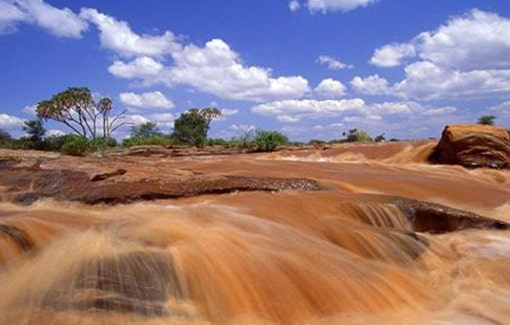
TSAVO NATIONAL PARK
With 21,000 km2, this park is divided into two units – Tsavo East and Tsavo West and is one of the world’s largest wildlife sanctuaries. The most important river area is the Athi / Tsavo / Galana complex while the Mzima Springs is the remarkable source of crystal clear water. Here there is an underwater observation chamber built so that the hippos can be viewed as they move through the water, surrounded by fish and crocodile, completely undisturbed. Practically all of Kenya’s wildlife is represented in the two Tsavos, but the dominant park animal is the elephant. Lion and cheetah are frequently seen and the park is famous for its historical lions that developed man-eating habits during the construction of the railroad at the end of the last century. Bird life is legion in the park and are present in great numbers.
Joe & I were very satisfied with our safari. We really enjoyed all of the camps you booked for us and truly enjoyed having the opportunity to travel with John again. He is quite conscientious and always tried to fulfill our wishes. We also really enjoyed the bush cocktails hours as well as our bush dinner – quire a change of pace.
All the camps provided high levels of service and we would be more than happy to visit them again.
Thank you for all your work in making the arrangement and we hope to see you again.
TANZANIAN DESTINATIONS
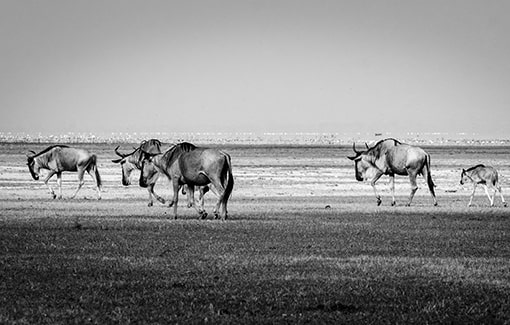
ARUSHA NATIONAL PARK
Arusha National Park is a multi-faceted jewel whose entrance leads to shadowy montane forest inhabited by blue monkeys and turacos and trogons. In the midst stands the Ngurdoto Crater, whose steep, rocky cliffs enclose a wide marshy floor dotted with herds of buffalo and warthog. Further north, rolling grassy hills enclose the tranquil beauty of the Momela Lakes, their shallows sometimes tinged pink with thousands of flamingos. Leopards and spotted hyenas may be seen slinking around in the early morning and late afternoon. At dusk and dawn, the eastern horizon reveals the majestic snow-capped peaks of Kilimanjaro, only 50km (30 miles) distant. But it is Kilimanjaro’s unassuming cousin, Mount Meru – the fifth highest in Africa at 4,566 metres (14,990 feet) – that dominates the park’s horizon.

GRUMETI WILDLIFE RESERVE
The Serengeti/Mara Eco-system is in broad terms the area defined by the Great Migration. This natural bio-zone is bordered in the south and east by the Great Rift Valley, in the north by the high grasslands and escarpments of southern Kenya, and in the west by the Lake Victoria basin. Vital to the continuation of the ecosystem is the free movement of the migratory herds. In the 1920s the Serengeti National Park was defined. In later years the Ngorongoro Crater Reserve was sectioned off and made accessible to the pastoral Masai, while the Maswa Game Reserve in the south, and the Grumeti and Ikorongo Game Reserves in the north were added as buffer zones to protect the main Serengeti National Park from encroachment. As a consequence the Grumeti Wildlife Reserve is a unique area within which lies the Grumeti River.
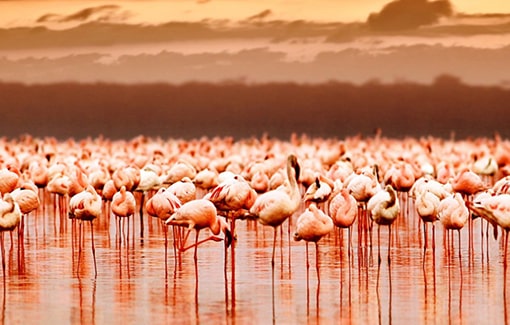
LAKE MANYARA NATIONAL PARK
Stretching for 50km along the base of the rusty-gold 600-metre high Rift Valley escarpment, Lake Manyara is a scenic gem, which offers a compact game-viewing circuit of the Tanzanian safari experience. From the entrance, the road winds through an expanse of lush jungle-like groundwater forest. Contrasting with that is the grassy floodplain and its expansive views across the alkaline lake, to the blue volcanic peaks. Large buffalo, wildebeest and zebra herds congregate on these grassy plains. Inland, a narrow belt of acacia woodland is the favoured haunt of Manyara’s legendary tree-climbing lions and impressively tusked elephants. Manyara is home to more than 400 species of birds, and even a first-time visitor to Africa might reasonably expect to observe at least a 100 of them in one day.
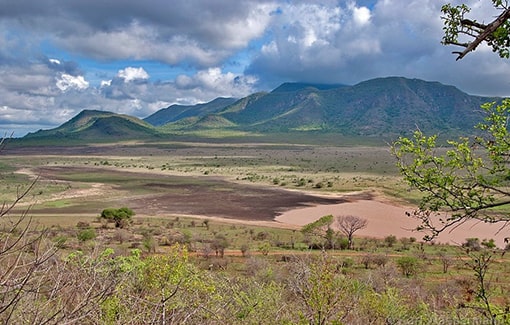
MKOMAZI GAME RESERVE
Visited by few, Mkomazi Game Reserve encompasses over 1,200 square miles in north-east Tanzania and lies between Mt. Kilimanjaro and the Indian Ocean. Mkomazi is adjacent to Kenya’s Tsavo National Park and together the two areas comprise one of the largest protected wilderness ecosystems in Africa. The reserve is home to large numbers of elephant, lion, hyena, leopard, cheetah, impala, eland, oryx and lesser kudu, with steady increases in the buffalo, zebra, giraffe and kongoni populations. The park boasts 78 kinds of mammals and over 400 bird species. The endangered wild dog or African wild dog has also been introduced to the reserve.
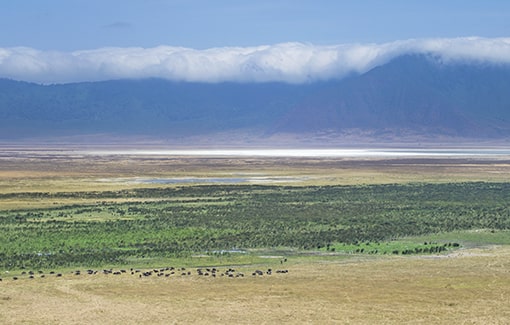
NGORONGORO CRATER CONSERVATION AREA
The Ngorongoro Crater is often called ‘Africa’s Eden’ and the ‘8th Natural Wonder of the World’. Ngorongoro Conservation Area includes its eponymous famous crater, Olduvai Gorge, and huge expanses of highland plains, scrub bush, and forests that cover approximately 8300 km2. Lake Ndutu and Masek, both alkaline soda lakes are home to rich game populations, as well as a series of peaks and volcanoes that make the area unique. The game viewing is truly incredible, and the topography and views of the surrounding Crater Highlands out of this world. This is home to Olduvai Gorge, where the hominid remains of a 1.8 million year old skeleton of Australopithecus boisei was discovered. The Crater and Conservation Area are without a doubt some of the most beautiful parts of Tanzania, steeped in history and teeming with wildlife.
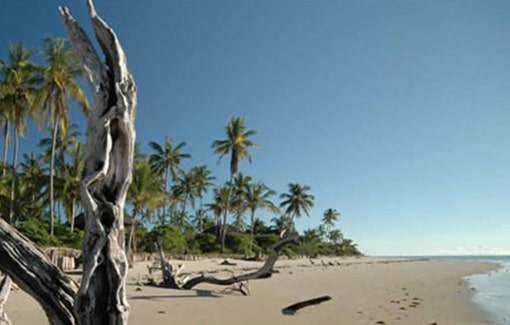
SAADANI NATIONAL PARK
Saadani is Tanzania’s newest national park. It covers 1000 km2 and is a unique wilderness as it is the only wildlife sanctuary in East Africa to boast an Indian Ocean beachfront. A wide range of grazers and primates are seen on game drives and walks, among them giraffe, buffalo, common waterbuck, reedbuck, hartebeest, wildebeest, red duiker, greater kudu, eland, and sable antelope. Herds of up to 30 elephants can be seen, and several lion prides are resident, together with leopard, spotted hyena and black-backed jackal. Boat trips on the mangrove-lined Wami River come with a high chance of sighting hippos, crocodiles and a selection of marine and riverine birds, including the mangrove kingfisher and lesser flamingo, while the beaches form one of the last major green turtle breeding sites on mainland Tanzania.
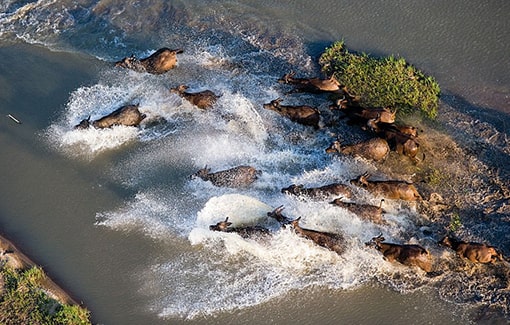
SELOUS GAME RESERVE
The Selous (pronounced “Seloo”) is a World Heritage Site, Africa’s largest protected area and the second largest game reserve in Africa. At over 21,000 miles² (55,000 km²) it is almost four times the size of the Serengeti. The park varies from rolling grassy woodlands and plains, to rocky outcrops cut by the Rufiji River. The river offers a superb method of game viewing especially during the dry season when animals congregate. Selous contains about a third of all the wild dogs in the world. In the dry season an ancient migration of elephants takes place between the Selous and Mozambique’s Niassa Game Reserve. This is one of the largest natural transboundary ecosystems in Africa and at the last consensus it was estimated that 64,400 elephants roam the two parks, with 84% on the Tanzanian side.
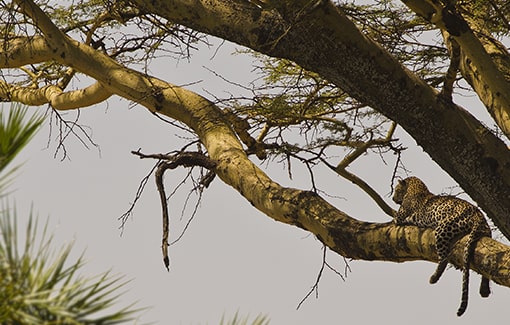
SERENGETI NATIONAL PARK
Tanzania’s oldest and most popular national park, the Serengeti is famed for its annual migration, when some six million hooves pound the open plains, as more than 200,000 zebra and 300,000 Thomson’s gazelle join the wildebeest’s trek for fresh grazing. Yet even when the migration is quiet, the Serengeti offers arguably the most scintillating game-viewing in Africa: great herds of buffalo, smaller groups of elephant and giraffe, and thousands upon thousands of eland, topi, kongoni, impala and Grant’s gazelle. The spectacle of predator versus prey dominates Tanzania’s greatest park. Popular the Serengeti might be, but it remains so vast that you may be the only human audience when a pride of lions masterminds a siege, focused unswervingly on its next meal.
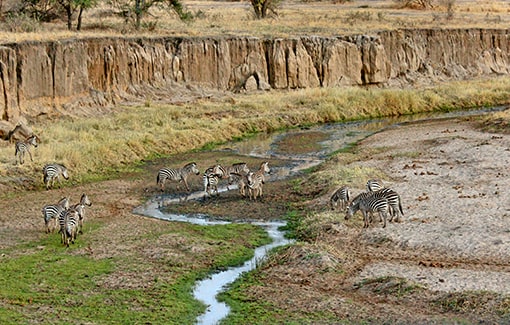
TARANGIRE NATIONAL PARK
The Tarangire River may shrivel to a shadow of its wet season self, but it is choked with wildlife. Herds of up to 300 elephants scratch the dry river bed for underground streams, while migratory wildebeest, zebra, buffalo, impala, hartebeest and eland crowd the shrinking lagoons. It’s the greatest concentration of wildlife outside the Serengeti – a smorgasbord for predators – and the one place in Tanzania where dry-country antelope such as the fringe-eared oryx and long-necked gerenuk are regularly seen. Tarangire’s pythons climb trees, as do its lions and leopards, lounging in the branches where the fruit of the sausage tree disguises the twitch of a tail. During the rainy season, the swamps, tinged green year round, are the focus for 550 bird varieties, the most breeding species in one habitat anywhere in the world.
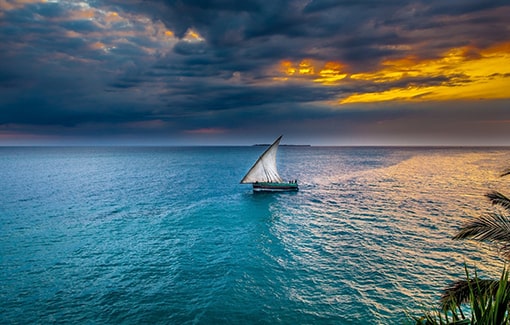
ZANZIBAR
Zanzibar is an archipelago made up of Zanzibar and Pemba Islands, and several islets. It is located in the Indian Ocean, about 25 miles from the Tanzanian coast. Zanzibar Island (known locally as Unguja) is 60 miles long and 20 miles wide, occupying a total area of approximately 650 square miles. It is characterized by beautiful sandy beaches with fringing coral reefs, and the magic of historic Stone Town. Visitors to Zanzibar tend to arrive and leave via Stone Town, the island capital and an historic hub of commerce and culture. There are some fabulous beaches on the islands of Zanzibar. Whether it is for a Zanzibar honeymoon or some post-safari relaxation, whether you prefer the blissful privacy of a private island or the amenities of a larger hotel, dive or snorkel, eat or sleep, there are good options for all.
